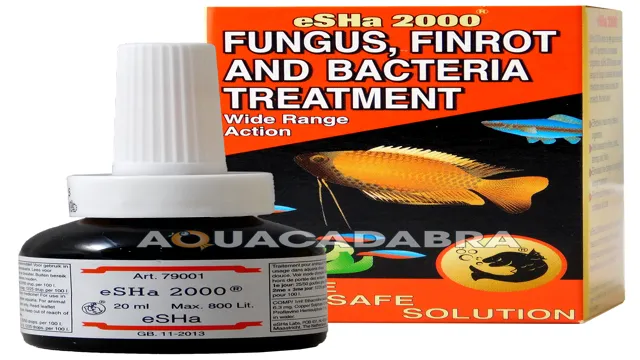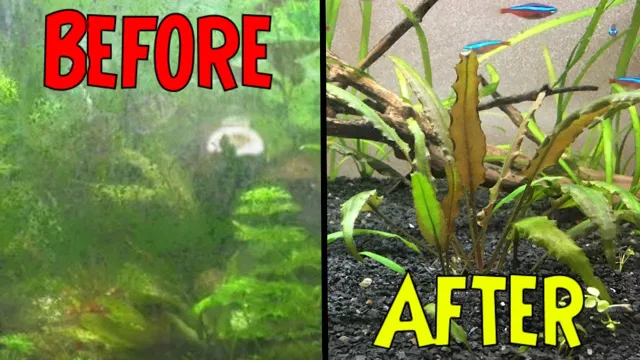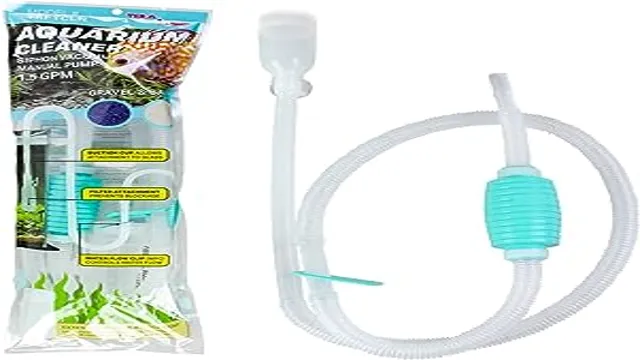How to Grow Monte Carlo Aquarium Plant: Tips and Tricks for a Lush Green Aquascape

Have you ever looked at a stunning aquarium and thought to yourself: “I wish I could have plants like that in my own tank.”? Well, you’re not alone. The good news is that you can bring that dream to life by growing Monte Carlo aquarium plants.
These stunning plants have become an increasingly popular addition to aquariums in recent years, and it’s not hard to see why. With their lush green leaves and delicate appearance, they can add an organic touch to any aquascape. But how can you grow them successfully? In this blog post, we’ll guide you through the process step-by-step so that you can create your very own aquatic paradise.
Introduction
If you want to achieve a lush, green carpet in your aquarium, then Monte Carlo may be the plant for you. However, it can be tricky to grow and maintain properly. The first step in growing Monte Carlo is to ensure you have the right lighting, as it requires high light intensity to grow and spread quickly.
You should also provide a nutrient-rich substrate and CO2 supplementation to promote healthy growth. It’s essential to trim the plant periodically to prevent it from becoming too dense and blocking out light to other plants and fish. Once established, Monte Carlo can provide a beautiful and natural-looking addition to your aquarium.
By consistently providing proper lighting, nutrients, and maintenance, you can successfully grow a beautiful carpet of Monte Carlo in your planted aquarium.
What is Monte Carlo?
Monte Carlo simulation is a powerful tool used to model probabilistic systems. This simulation relies on the generation of random numbers to create statistical models that can predict a range of possible outcomes. The Monte Carlo approach is used to solve problems that are too complex for conventional analytical methods.
In simple terms, Monte Carlo simulation is a method that provides a range of possible outcomes by randomly generating input values for complex systems. One of the most significant benefits of the Monte Carlo approach is that it can be used to model systems where the variables involved are continuous and independent of one another. In conclusion, Monte Carlo simulation is a flexible and powerful technique that has the potential to solve a range of complicated problems.

Why is it a popular aquarium plant?
Anubias is a popular aquarium plant because of its unique characteristics that make it ideal for both novice and experienced aquarium enthusiasts. This plant has a hardy nature, slow growth rate, and can survive in various water conditions. It doesn’t need to be planted in the substrate and can be attached to driftwood, rocks, or even left floating in the water.
Its broad leaves make it an excellent hiding spot for shy or territorial fish, and it can absorb excess nutrients in the water, helping to keep the aquarium clean and healthy. Overall, Anubias is an excellent choice for any aquarium due to its ease of care, versatility, and beauty.
Tank Requirements
Growing Monte Carlo aquarium plant can be a fun and fulfilling experience, but it’s essential to understand the tank requirements to ensure it thrives. First and foremost, the plant requires a high light intensity of at least 3-4 watts per gallon for 8-10 hours per day, along with a CO2 injection system to promote healthy growth. Additionally, the tank’s substrate must be nutrient-rich and provide a stable footing for the plant’s roots.
Monte Carlo plants also prefer an acidic environment with a pH level between 0 and
Proper water circulation and frequent partial water changes of 20-30% every 1-2 weeks are also crucial to maintaining a healthy environment. By providing these vital tank requirements, you can guarantee the best possible growth for your Monte Carlo plant, creating a beautiful addition to any aquarium.
Lighting needs
When setting up a new aquarium, it’s important to consider the lighting needs of your fish and aquatic plants. Different species have different requirements, so it’s essential to learn about their natural habitats and adjust accordingly. In general, most fish prefer dim lighting, which can promote relaxation, breeding, and coloration.
However, some species do need brighter lighting to thrive and may benefit from UV lighting for Vitamin D synthesis. For plants, the intensity and duration of light are crucial for photosynthesis and growth. Generally, LED lights are the most popular choice for aquariums due to their energy efficiency and customization options.
When choosing aquarium lights, consider the size and shape of your tank, the type of organisms you have, and your personal preferences. Don’t forget to simulate natural daylight cycles and adjust your lighting as needed. Investing in quality lighting can promote the health and happiness of your aquatic pets.
Considerations for water parameters
When it comes to setting up your aquarium, understanding the water parameters required for the species you’re planning to keep is essential. Different fish and plants require specific water conditions to thrive, which is why it’s important to do your research beforehand. Monitoring the pH level, water hardness, and temperature of your tank is crucial in maintaining a healthy environment for your aquatic creatures.
Also, ensure that you have an adequate filtration system that can keep up with the waste produced by your fish to avoid issues such as ammonia buildup and nitrate poisoning. One way to ensure that your tank is suitable for your intended inhabitants is by checking the housing requirements for each species. Some fish, for instance, require a certain water pH level, while others prefer a specific temperature range.
Keeping these factors in mind will ensure that your fish have the best possible chance of flourishing in their new aquatic home.
Fertilizer requirements
When it comes to maintaining a healthy and vibrant aquarium, one of the most critical factors to consider is fertilizer. Proper fertilization requires understanding the specific needs of the plants in your tank, as well as the nutrient requirements of any fish or other animals living in the aquarium. It’s important to choose a fertilizer that balances both of these needs while avoiding any harmful side effects.
For example, some fertilizers may contain high levels of copper, which can be toxic to certain species of fish. To keep your tank thriving, make sure to research the specific fertilizer requirements of your plants and inhabitants and select a fertilizer that meets those needs. With the right fertilizer, you can create a beautiful underwater world that both you and your fish can enjoy for years to come.
Planting and Maintenance
Looking to add the beautiful and vibrant Monte Carlo aquarium plant to your aquatic garden? Excellent choice! This plant is an ideal carpet plant that will look stunning in your aquarium. But, growing and maintaining the Monte Carlo plant requires some effort, so let’s dive in. This plant requires moderate lighting and a nutrient-rich substrate.
Ensure your aquarium substrate is high in nutrients and has a good flow of CO When planting, it’s best for the Monte Carlo plant to remove the rock wool from their roots as it is tough for them to absorb nutrients. Plant them in a grid-like pattern so that they can grow densely and create a stunning carpet.
It’s important to trim the plant regularly to prevent it from overgrowing and blocking the light to other plants in your aquarium. Monte Carlo plants are great for improving water quality, but too much growth can affect the fauna. By following these simple tips, you can grow and maintain your Monte Carlo plant successfully, and admire their beauty in your aquarium.
Substrate selection and planting
When it comes to planting and maintaining your garden, selecting the right substrate is crucial. The substrate serves as the growing medium for your plants, providing essential nutrients, water, and air to their roots. One important factor to consider when choosing your substrate is the type of plants you want to grow.
Some plants prefer a sandy or gritty substrate, while others require a more nutrient-rich soil. Additionally, it’s important to choose a substrate that will provide excellent drainage to prevent waterlogging and root rot. Once you’ve chosen your substrate, it’s time to get planting.
When planting, be sure to dig a hole that’s the same depth as the plant’s root ball and twice as wide. This allows the plant’s roots to spread out and establish themselves in the substrate. After planting, be sure to water the soil thoroughly to help it settle around the roots.
Finally, make sure to regularly maintain your garden by fertilizing and watering regularly to ensure your plants stay healthy and happy.
Trimming and propagation
When it comes to maintaining your plants, proper trimming and propagation techniques can go a long way in keeping them healthy and vibrant. Trimming, or pruning, is the process of removing dead or damaged leaves, stems, and branches from your plants. This not only helps to improve their appearance but also promotes new growth and better airflow.
When it comes to propagation, this involves taking cuttings from your existing plants and creating new ones. This can be done by rooting the cuttings in water or potting soil and then transferring them to their own containers once they begin to grow. By incorporating both trimming and propagation techniques into your plant care routine, you can help your plants thrive and grow into beautiful, healthy specimens.
So next time you’re tending to your plants, don’t forget to give them a little TLC with some proper trimming and propagation!
Common Issues and Solutions
Monte Carlo aquarium plant is a beautiful addition to any aquascape with its lush green carpet-like appearance. As the name suggests, it originates from South America and requires a high level of care to grow successfully. However, there are a few common issues that aquarists face when trying to grow Monte Carlo.
One of the most common problems is algae growth, which can quickly overrun the plant and kill it. To avoid this, it’s important to keep the tank clean and provide ample lighting as Monte Carlo requires intense lighting to grow. Additionally, adding CO2 can also help the plant to thrive.
Another common issue is insufficient nutrients, which can cause the plant to yellow and wither. It’s important to fertilize the tank regularly with a high-quality plant fertilizer to ensure the plant has all the necessary nutrients for healthy growth. By taking these steps, you can successfully grow and maintain a stunning carpet of Monte Carlo aquarium plant in your aquatic ecosystem.
Algae growth
Algae growth in ponds or pools can be a common headache for many homeowners. It can make the water look green and murky while also creating unsightly scum on the surface. The most common factor causing algae growth is excess nutrients like fertilizers or decaying plant matter in the water.
To keep algae growth at bay, it’s essential to maintain proper chemical levels and filtration equipment. Regular cleaning and vacuuming of the pool or pond can also help keep debris and nutrients under control. In extreme cases, a thorough scrubbing of the walls and floor may be necessary to remove any algae buildup.
By taking proactive measures to prevent and control algae growth, you can ensure that your pool or pond stays clean and clear all season long.
Melted leaves
If you’ve ever noticed melted or discolored leaves on your plants, you’re not alone. This is a common issue that can have a variety of causes. One possible culprit is sun scorch.
This occurs when the leaves are exposed to too much direct sunlight, especially during hot summer months. To prevent sun scorch, consider providing shade for your plants during the hottest parts of the day. Another possible cause of melted leaves is herbicide damage.
If you’ve used a herbicide recently, it’s possible that some of the spray may have drifted onto your plants, causing damage. To prevent this, be sure to follow the instructions carefully and avoid spraying on windy days. Finally, nutrient deficiencies can also cause melted leaves.
If your soil lacks essential nutrients, your plants may not be getting the nourishment they need to thrive. Consider adding a balanced fertilizer to your soil to help correct any deficiencies. By identifying the cause of melted leaves and taking steps to address it, you can help your plants stay healthy and vibrant throughout the growing season.
Failure to thrive
“Failure to thrive” Common issues and solutions Failure to thrive in infants and children can be a cause of concern for parents and caregivers. This can arise due to various reasons, including inadequate nutrition, socioeconomic issues, or medical conditions. Common symptoms can include weight loss or a lack of weight gain, delayed development, and a general lack of energy.
It is important to identify the root cause first before planning any solutions – it can be as simple as providing a wholesome and nutritious diet or as complex as treating a medical condition. In many cases, a multi-disciplinary approach is required, including the involvement of pediatricians, dietitians, and social workers. It is essential to provide a supportive and nurturing environment for the child, with consistent monitoring and follow-up.
With the right interventions and support, children can overcome the challenges of failure to thrive and have a healthy and happy childhood.
Conclusion
In the words of the great Leonardo da Vinci, “Simplicity is the ultimate sophistication.” Growing Monte Carlo aquarium plants is no exception to this rule. With patience, attention to detail, and a little bit of creativity, you can cultivate a thriving underwater garden that will take your aquarium to new heights.
So grab your gardening gloves, start planting, and watch as your new aquatic friends bring life and color to your tank. Who knows, with some luck and dedication, you might just end up with the next great coral reef right in your living room!”
FAQs
What kind of lighting does Monte Carlo aquarium plant require?
Monte Carlo aquarium plant requires high lighting levels of at least 2 watts per gallon of water.
How often should Monte Carlo aquarium plant be trimmed?
Monte Carlo aquarium plant should be trimmed regularly, at least once a month, to prevent excessive growth and keep it neat and healthy.
What is the ideal water temperature for Monte Carlo aquarium plant?
The ideal water temperature for Monte Carlo aquarium plant is between 72-82°F (22-28°C).
How often should Monte Carlo aquarium plant be fertilized?
Monte Carlo aquarium plant should be fertilized once or twice a week with a high-quality liquid fertilizer.
Can Monte Carlo aquarium plant be grown without CO2 injection?
Monte Carlo aquarium plant can be grown without CO2 injection, but it will grow slower and not as lush as with CO2 injection.
How long does it take for Monte Carlo aquarium plant to carpet?
Monte Carlo aquarium plant can carpet in about 6-8 weeks, depending on lighting, CO2, and fertilization.
How deep should I plant Monte Carlo aquarium plant in the substrate?
Monte Carlo aquarium plant should be planted shallow, with the root base just below the substrate surface.






